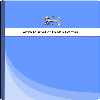PLANTAR FASCİİTTE ONLİNE SAĞLIK BİLGİLERİNİN OKUNABİLİRLİĞİ VE KALİTESİ
Plantar Fasciit, Bireysel Sağlık, Web Kullanımı
THE READABILITY AND QUALITY OF ONLINE HEALTH INFORMATION ON PLANTAR FASCIITIS
Plantar Fasciitis, Individual Health, Web Usage,
___
- Use of the Internet for Health Information https://www.cdc.gov/nchs/products/databriefs/db66.htm#ref1/Erişim Tarihi: 6 Ocak 2022.
- Park E, Kwon M. Health-Related Internet Use by Children and Adolescents: Systematic Review. J Med Internet Res. 2018;20(4):e120.
- Arcury TA, Sandberg JC, Melius KP, et al. Older adult internet use and eHealth literacy. J Appl Gerontol. 2020;39:141-50.
- The most recent time you looked for information about health or medical topics, where did you go first? | HINTS n.d. https://hints.cancer.gov/view-questions-topics/question-details.aspx?PK_Cycle=11&qid=688/Erişim Tarihi: 6 Ocak 2022.
- Morahan-Martin JM. How Internet Users Find, Evaluate, and Use Online Health Information: A Cross-Cultural Review. CyberPsychology & Behavior. 2004;7(5):497-510.
- Daraz L, Morrow AS, Ponce OJ, et al. Can Patients Trust Online Health Information? A Meta-narrative Systematic Review Addressing the Quality of Health Information on the Internet. J Gen Intern Med. 2019;34:1884-1891.
- Cuan-Baltazar JY, Muñoz-Perez MJ, Robledo-Vega C, Pérez-Zepeda MF, Soto-Vega E. Misinformation of COVID-19 on the Internet: Infodemiology Study. JMIR Public Health Surveill. 2020;6(2):e18444.
- Kloosterboer A, Yannuzzi NA, Patel NA, Kuriyan AE, Sridhar J. Assessment of the Quality, Content, and Readability of Freely Available Online Information for Patients Regarding Diabetic Retinopathy. JAMA Ophthalmol. 2019;137:1240-1245.
- Rasenberg N, Bierma-Zeinstra SMA, Bindels PJ, van der Lei J, van Middelkoop M. Incidence, prevalence, and management of plantar heel pain: a retrospective cohort study in Dutch primary care. Br J Gen Pract. 2019;69:801-808.
- League AC. Current concepts review: Plantar fasciitis. Foot Ankle Int. 2008;29:358-366.
- Cole C, Seto C, Gazewood J. Plantar Fasciitis: Evidence-Based Review of Diagnosis and Therapy- American Family Physician. Am Fam Physician. 2005;72:2237-2242.
- Cinar E, Saxena S, Akkurt HE, Uygur F. Extracorporeal shockwave therapy in the management of plantar fasciitis: A randomized controlled trial. Foot (Edinb). 2020;44:101679.
- Lim S-T, Kelly M, O’Neill S, D’Souza L. Assessing the Quality and Readability of Online Resources for Plantar Fasciitis. J Foot Ankle Surg. 2021;60:1175-1178.
- Alexa - Top sites n.d. https://www.alexa.com/topsites/ Erişim Tarihi: 6 Ocak 2022.
- O’Neill SC, Baker JF, Fitzgerald C, et al. Cauda equina syndrome: assessing the readability and quality of patient information on the Internet. Spine. 2014;39:645-649.
- Lovett J, Gordon C, Patton S, Chen CX. Online information on dysmenorrhoea: An evaluation of readability, credibility, quality and usability. J Clin Nurs. 2019;28:3590-3598.
- Silberg WM, Lundberg GD, Musacchio RA. Assessing, controlling, and assuring the quality of medical information on the Internet: Caveant lector et viewor—Let the reader and viewer beware. Jama. 1997;277:1244-1245.
- HONcode n.d. https://www.hon.ch/HONcode/ Erişim Tarihi: 6 Ocak 2022.
- Flesch R. A new readability yardstick. J Appl Psychol. 1948;32:221-233.
- Mc Laughlin GH. SMOG grading-a new readability formula. J Read. 1969;12:639-646.
- Meade CD, Smith CF. Readability formulas: cautions and criteria. Patient Educ Couns. 1991;17:153-158.
- Kocyigit BF, Koca TT, Akaltun MS. Quality and readability of online information on ankylosing spondylitis. Clin Rheumatol. 2019;38:3269-3274.
- Ng MK, Mont MA, Piuzzi NS. Analysis of Readability, Quality, and Content of Online Information Available for “Stem Cell” Injections for Knee Osteoarthritis. J Arthroplasty. 2020;35:647-651.
- Al-Ak’hali MS, Fageeh HN, Halboub E, Alhajj MN, Ariffin Z. Quality and readability of web-based Arabic health information on periodontal disease. BMC Med Inform Decis Mak. 2021;21:1-8.
- Bagcier F, Yurdakul OV, Temel MH. Quality and readability of online information on myofascial pain syndrome. J Bodyw Mov Ther. 2021;25:61-66.
- Ghodasra JH, Wang D, Jayakar RG, et al. The Assessment of Quality, Accuracy, and Readability of Online Educational Resources for Platelet-Rich Plasma. Arthrosc J Arthrosc Relat Surg. 2018;34:272-278.
- Cisu TI, Mingin GC, Baskin LS. An evaluation of the readability, quality, and accuracy of online health information regarding the treatment of hypospadias. J Pediatr Urol. 2019;15(40):1-6.
- Arif N, Ghezzi P. Quality of online information on breast cancer treatment options. The Breast. 2018;37:6-12.
- Premkumar A, Almeida BA, Lopez J, Pean CA, Nwachukwu BU, Sculco PK. The Quality of Online Resources Available to Patients Regarding Cannabidiol for Symptomatic Relief of Hip or Knee Arthritis is Poor. JAAOS Glob Res Rev. 2021;5:1-7.
- Fascinating and Incredible YouTube Statistics | Brandwatch n.d. https://www.brandwatch.com/blog/youtube-stats/ Erişim Tarihi: 6 Ocak 2022.
- Yayın Aralığı: Yılda 3 Sayı
- Başlangıç: 2020
- Yayıncı: Kılıçhan BAYAR
SAĞLIK ÇALIŞANLARININ MOBBİNG (YILDIRMA) YAŞAMA DÜZEYLERİNİN İŞ DOYUMUNA ETKİSİ
YETİŞKİN KADINLARDA ARALIKLI AÇLIK DİYETİNİN ANTROPOMETRİK PARAMETRELERE ETKİSİ
ÖDÜL İLİŞKİLİ YEME ÖLÇEĞİ RED-13’ÜN TÜRKÇE GEÇERLİLİK VE GÜVENİLİRLİK ÇALIŞMASI
Nergiz SARUHAN, Zehra GÜLSÜNOĞLU KONUŞKAN
YETİŞKİNLERDE KÜMÜLATİF DİYET KARYOJENİTESİ VE DİŞ ÇÜRÜKLERİ
Nihan KATAYIFÇI, İrem HÜZMELİ, Büşra ABAY, Cigdem DOGRAMACİ
ADÖLESANLARDA İNTERNET BAĞIMLILIĞI KAYGI VE SALDIRGAN DAVRANIŞLAR ARASINDAKİ İLİŞKİNİN BELİRLENMESİ
EBELİK ALANINDA KULLANILAN MOBİL SAĞLIK UYGULAMALARI
Ayça DEMİR YILDIRIM, Tuğba YILMAZ ESENCAN, Ayşegül GÜDER, Kübra DAŞTAN
Nilgün SEREMET KÜRKLÜ, Bengi ALOĞLU, Eda ÜNAL, Melek ÇOŞKUN, Nisa DEMİR, Nüket GÜDÜK
PLANTAR FASCİİTTE ONLİNE SAĞLIK BİLGİLERİNİN OKUNABİLİRLİĞİ VE KALİTESİ
